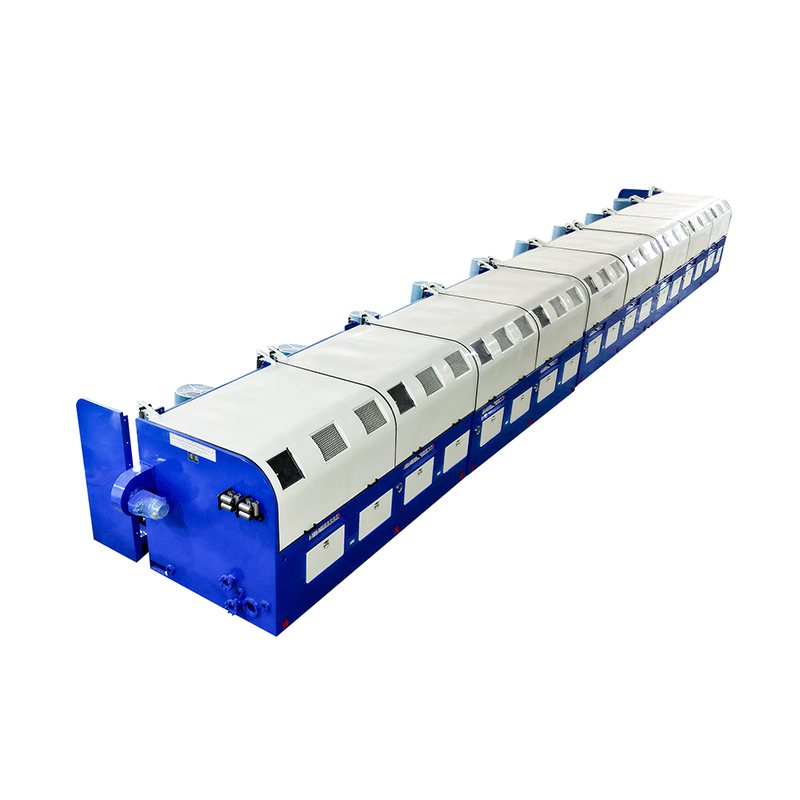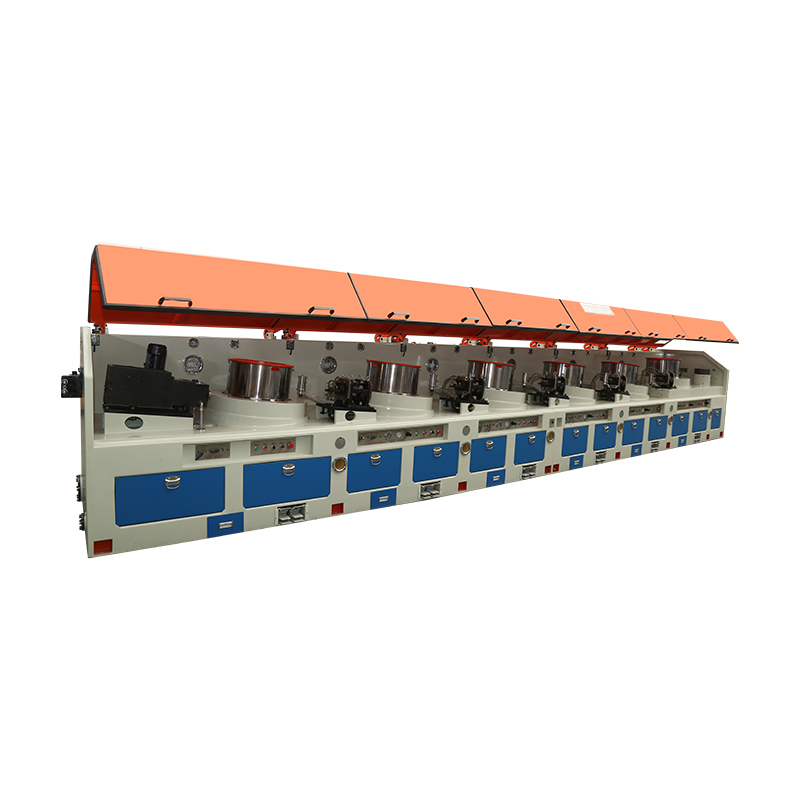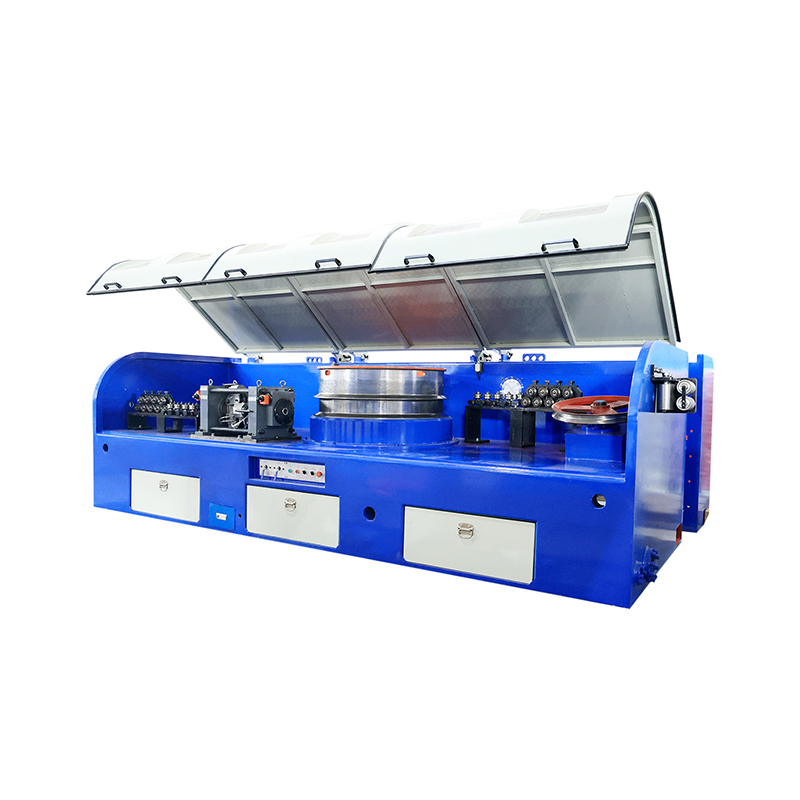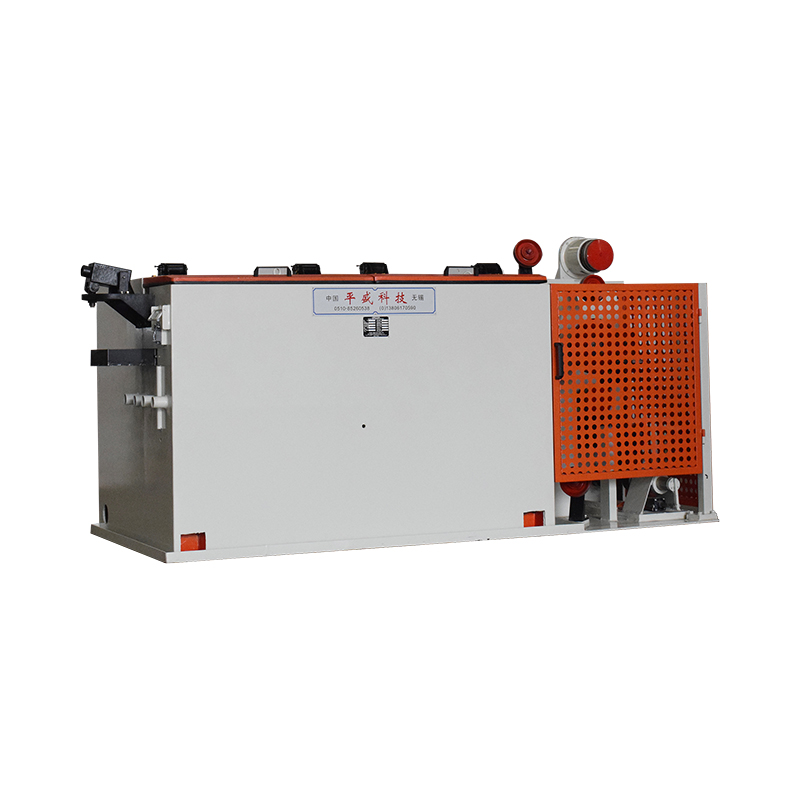How Does Wet Wire Drawing Machine Improve Wire Manufacturing Efficiency and Quality?
In modern wire manufacturing, achieving high-quality, precise, and consistent wire is critical for industries ranging from electrical engineering to construction. One of the most essential machines in this process is the wet wire drawing machine. But what exactly is a wet wire drawing machine, how does it differ from dry drawing, and why is it preferred for certain applications? This article explores its features, working principle, benefits, applications, and maintenance considerations.
1. What Is a Wet Wire Drawing Machine?
A wet wire drawing machine is a mechanical device used to reduce the diameter of metal wires—typically copper, aluminum, or steel—while simultaneously improving surface finish, mechanical properties, and dimensional accuracy. Unlike dry wire drawing, wet drawing uses a drawing solution or lubricant to reduce friction between the wire and the dies.
The machine generally consists of:
- Pay-off system: Feeds wire from coils or spools.
- Drawing dies: Precision holes that gradually reduce the wire diameter.
- Lubrication system: Wet drawing solution to cool and lubricate the wire.
- Take-up system: Collects the drawn wire onto reels.
Wet drawing helps achieve higher reductions per pass, smoother surfaces, and reduced risk of wire breakage, making it ideal for high-quality wire production.
2. How Does a Wet Wire Drawing Machine Work?
The process of wet wire drawing involves:
- Wire Feeding – The wire is uncoiled and fed into the drawing machine.
- Die Reduction – The wire passes through a series of dies, each slightly smaller than the previous, gradually reducing diameter.
- Lubrication – A water-based or oil-based solution is applied continuously to reduce friction, prevent overheating, and improve surface finish.
- Cooling – The drawing solution also cools the wire, preventing thermal stress and maintaining metal properties.
- Wire Collection – The finished wire is wound onto reels or spools for further processing.
By controlling die geometry, lubrication, and speed, wet wire drawing machines produce high-precision wires suitable for demanding applications.
3. Key Features and Advantages
| Feature | Description | Benefit |
| Lubricated Drawing | Uses water-based or oil-based solutions | Reduces die wear and wire breakage |
| High Reduction Ratio | Can reduce diameter significantly in fewer passes | Increases efficiency and throughput |
| Precision Dies | Polished and accurately sized | Ensures dimensional accuracy and smooth surface finish |
| Cooling System | Keeps wire temperature within optimal range | Maintains mechanical properties and prevents overheating |
| Versatility | Suitable for copper, aluminum, and steel wires | Supports a wide range of industries |
| Automated Pay-off and Take-up | Smooth feeding and winding of wire | Reduces manual labor and production errors |
| Low Noise and Vibration | Advanced design minimizes operational disturbances | Improves workplace safety and comfort |
4. Applications of Wet Wire Drawing Machines
- Electrical Wires – Produces copper and aluminum wires for power transmission and distribution.
- Electronic Components – Manufacturing precise wires for motors, transformers, and circuit boards.
- Telecommunication Cables – Produces fine wires for fiber optic cables and communication lines.
- Industrial Springs and Fasteners – Provides high-quality wire for mechanical components.
- Automotive Wiring – Produces wires for vehicles with strict quality and durability requirements.
- Construction Industry – Produces wire for reinforcement, binding, and structural applications.
5. How to Select the Right Wet Wire Drawing Machine
-
Wire Material
- Consider copper, aluminum, or steel; material hardness affects die selection and machine capacity.
-
Wire Diameter Range
- Choose a machine capable of handling your starting and target wire diameters.
-
Reduction Per Pass
- High reduction capability reduces the number of passes but requires effective lubrication and cooling.
-
Die Material
- Tungsten carbide or diamond dies are preferred for durability and precision.
-
Production Speed
- Ensure the machine speed matches your production requirements without causing wire defects.
-
Lubrication System
- A reliable and adjustable lubrication system is essential for consistent quality and die longevity.
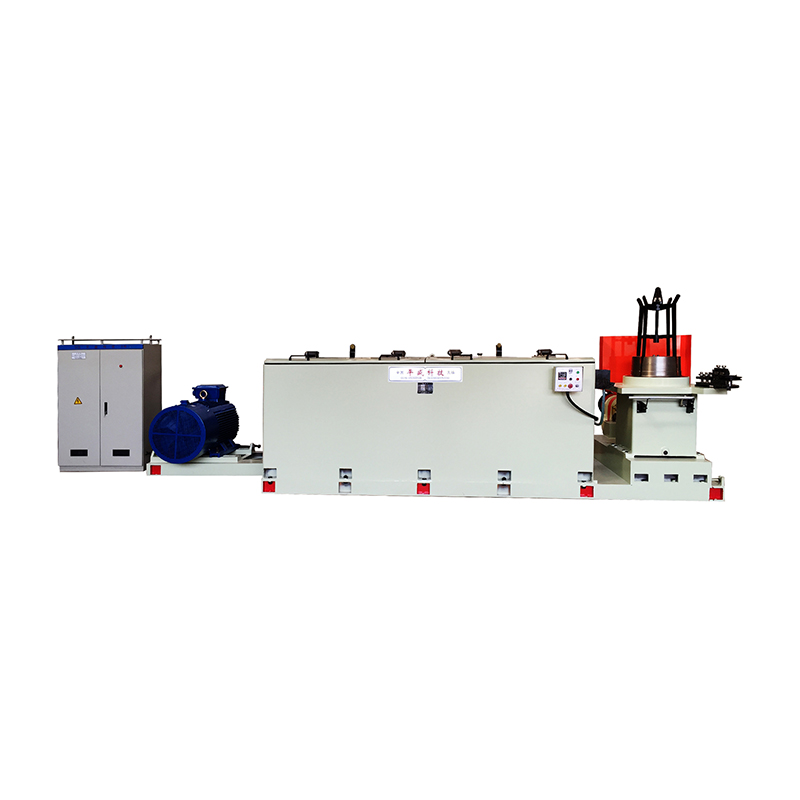
6. Maintenance Tips for Wet Wire Drawing Machines
- Regular Die Inspection – Check for wear or damage and replace as necessary.
- Lubricant Maintenance – Maintain proper solution concentration and temperature to ensure smooth drawing.
- Wire Alignment – Ensure proper feeding alignment to prevent wire breakage or surface scratches.
- Cleaning – Remove accumulated debris, scale, and lubricant residue from the machine.
- Motor and Gearbox Maintenance – Keep motors, bearings, and gearboxes properly lubricated and free of debris.
- Scheduled Overhaul – Perform periodic inspections and component replacements to maintain optimal performance.
7. Benefits of Using a Wet Wire Drawing Machine
- Improved Wire Quality – Smooth surface, precise diameter, and consistent mechanical properties.
- Higher Productivity – Larger diameter reductions per pass reduce total processing time.
- Extended Die Life – Lubrication reduces friction and wear on dies.
- Versatile Material Handling – Supports various metals and alloys, including high-conductivity copper and aluminum.
- Cost Efficiency – Less die wear, fewer passes, and minimal wire breakage reduce production costs.
- Environmental Safety – Modern machines use closed-loop water-based lubricants, reducing chemical exposure.
8. Conclusion
A wet wire drawing machine is an indispensable asset in wire manufacturing, offering precision, efficiency, and high-quality output. By employing lubrication and controlled reduction, these machines produce wires with excellent surface finish, dimensional accuracy, and mechanical properties.
Selecting the right machine based on material type, diameter range, reduction per pass, and lubrication system is essential for maximizing production efficiency and minimizing downtime. Proper maintenance, die care, and lubrication management ensure long-term reliability and consistent wire quality.
For manufacturers aiming to produce high-performance electrical, electronic, automotive, or industrial wires, investing in a high-quality wet wire drawing machine is a strategic decision that enhances productivity, reduces costs, and guarantees superior end-product quality.


 EN
EN
 English
English Español
Español Français
Français Português
Português عربى
عربى

